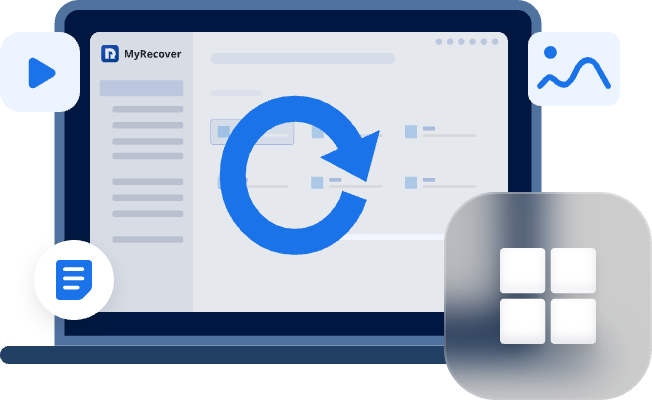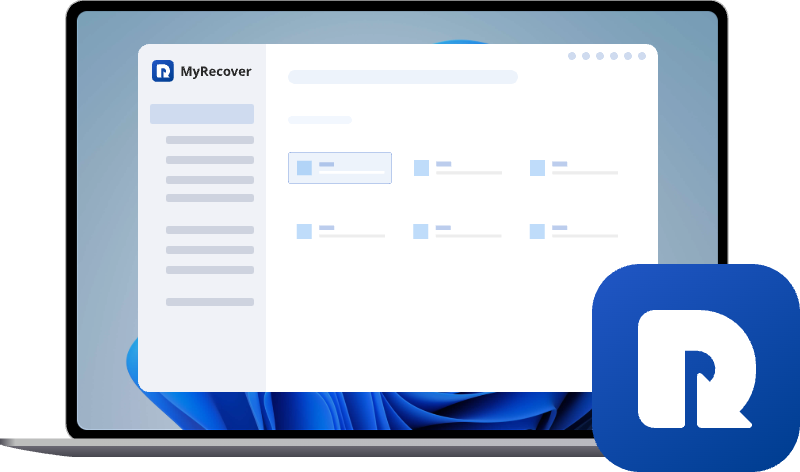How to Recover Data After MBR to GPT Conversion
Many users panic, saying 'I lost all my files after converting MBR disk to GPT'. But recovery is possible! Discover effective data restoration tools, step-by-step solutions, and expert tips to regain access to your important files seamlessly.
Introduction
Lost all my files after converting MBR disk to GPT
Long story short i basically converted my mbr disk into a gpt disk and lost everything on it ( i didn't format )
does anyone know how i can find the lost data? i really need to find it because my dumb self had the secret key for my crypto wallet there,,,
if i don't find the data i basically lost over 1000$+++ in nfts...
- Question from https://forums.tomshardware.com/
Converted your MBR disk to GPT and suddenly lost all your files? Don’t panic — you’re not the first, and you won’t be the last! This issue happens more often than you’d think. The good news is that you can recover your lost data safely. In this guide, we’ll show you exactly how to recover data after MBR to GPT conversion using simple yet effective methods.
Understanding MBR and GPT
Before we start recovering anything, it’s crucial to understand what MBR and GPT actually are.
What Is MBR (Master Boot Record)?
The Master Boot Record (MBR) is the old-school way of organizing partitions on a disk. It’s reliable but limited — it supports up to 2TB and only four primary partitions.
What Is GPT (GUID Partition Table)?
GUID Partition Table (GPT) is the modern replacement for MBR. It supports much larger drives and more partitions, making it perfect for newer systems using UEFI.
Key Differences Between MBR and GPT
| Feature | MBR | GPT |
|---|---|---|
| Partition Limit | 4 Primary | 128 Primary |
| Max Disk Size | 2TB | 9.4ZB (virtually unlimited) |
| Boot Mode | BIOS | UEFI |
| Backup Partition Table | No | Yes |
| Corruption Tolerance | Low | High |
Why Do People Convert MBR to GPT and What Causes Data Loss?
Why Do People Convert MBR to GPT?
There are several reasons to switch from MBR to GPT — and most of them are linked to performance and compatibility.
- Compatibility with UEFI: UEFI firmware requires GPT, not MBR. So if you’re upgrading your system, conversion is often mandatory.
- Support for Larger Drives: Disks larger than 2TB can’t be fully used on MBR. GPT solves that limit easily.
- Performance and Stability Benefits: GPT disks handle errors better and provide redundancy, making them more secure for modern systems.
What Causes Data Loss During Conversion?
Data loss usually occurs because of missteps during the conversion process. Here’s what typically goes wrong:
- Using Disk Management or Command Line Tools Incorrectly: Some built-in tools require deleting partitions before converting, which wipes all your data.
- Formatting or Deleting Partitions: If you accidentally format your disk or delete partitions, all data becomes inaccessible.
- Failed or Interrupted Conversion Process: Power failure or improper shutdown during conversion can corrupt partitions, making your data unreadable.
Precautions Before Attempting Data Recovery
Before jumping into recovery, follow these essential tips:
Stop Using the Drive Immediately
Stop any new operations on the affected drive — no downloads, installations, or file saves.
Avoid Formatting or Writing New Data
Do not format or re-partition the disk; this could permanently overwrite lost data.
Use a Reliable Recovery Tool
Choose software built specifically for partition or format recovery to maximize success.
[3 Methods] How to Recover Data After MBR to GPT Conversion
Can you recover data after MBR to GPT conversion? Yes! Even though your files might not show up, they’re usually still on the disk. With the right recovery tool, you can retrieve them safely and completely. Here’s how you can bring your files back using proven and practical recovery methods.
Method 1: Use Professional Data Recovery Software
When it comes to professional, reliable data recovery, MyRecover is one of the best tools out there. Designed for both beginners and advanced users, it helps restore files lost during disk conversion, formatting, or partition deletion with ease.
Step-by-Step Recovery Using MyRecover
1. Do NOT install MyRecover on the affected disk. Install it on a separate machine or different drive.
2. Launch the software and select the drive that was converted from MBR to GPT.
3. Click Scan to begin searching for lost files and partitions.
4. Preview the recovered files to confirm they’re correct and intact.
5. Click Recover and save the files to a safe location (never the same drive).
MyRecover offers quick scanning, deep analysis, and an intuitive interface, making it ideal for restoring data lost due to disk conversion.
| Pros | ✅Easy GUI, automated steps, high success for non-technical users. ✅Fast previews and selective recovery. |
| Cons | ❌Cost (licensed per disk or per PC). ❌Not infallible — very low-level physical damage or overwritten data may still require lab services. |
Method 2: Use Open-Source Tools (TestDisk + gdisk)
If you like command-line tools and want to repair the partition table directly, TestDisk and gdisk are powerful.
1. TestDisk
When to use TestDisk
- If the partition table is damaged/overwritten but the file system still exists.
- If you want to attempt partition table recovery before deep file carving.
Quick TestDisk Walkthrough (Commands & Tips)
Step 1: Launch TestDisk
Run TestDisk as Administrator (Windows: testdisk_win.exe, Linux/macOS: sudo testdisk). Select "Create" to make a log file.
Step 2: Choose the Disk
Use the arrow keys to pick the drive where your partition is missing. Press Enter.
Step 3: Select Partition Table Type
Usually Intel for MBR disks, EFI GPT for modern systems. TestDisk detects this automatically — just confirm the default.
Step 4: Analyse
Select "Analyse" → Enter. Then choose "Quick Search".
Step 5: Check Found Partitions
TestDisk lists partitions it found. Highlight one → press "p" to view files.
If your files appear = ✅ good sign!
If not found → choose "Deeper Search" (takes longer).
Step 6: Recover the Partition
When you find the correct partition:
- Make sure it’s marked as P (Primary) or * (bootable).
- Press Enter, then choose "Write" to save the partition table.
- Confirm when asked.
Step 7: Reboot
Restart your computer so your OS can reload the new partition table.
Step 8: Check Your Data
Open File Explorer (Windows) or Disk Utility (Mac/Linux). Your recovered partition should now be visible with all your files.
⚠️ If You’re Unsure
- Instead of writing, use "p" → "C" to copy files to another drive. This lets you recover files safely without changing the disk structure.
- If testdisk detects your previous partitions, copying files out to a safe disk is often the safest immediate action.
2. Using gdisk to Inspect/Rebuild Partition Tables
gdisk (GPT fdisk) can convert between partition table formats and inspect backup GPT headers. Typical flow:
1. sudo gdisk /dev/sdX
2. Use v to verify disk.
3. Use b to back up partition table, r for recovery options.
4. w writes changes — only use after you are certain.
Method 3: Restore from a Backup
If you’ve been maintaining backups — whether with File History, Windows Backup, or cloud storage — recovery becomes effortless.
- File History: open Control Panel → File History → Restore personal files.
- Shadow Copies: Right-click folder → Properties → Previous Versions (if enabled).
- Cloud backups (OneDrive, Google Drive) — check web interfaces for earlier versions.
Backups are your best safety net against unexpected data loss.
Tips to Prevent Data Loss in Future Conversions
Data loss prevention is always better than recovery. Here’s how to stay safe next time.
Always Create a Full Backup
Before making any partition or disk changes, back up everything to an external drive or cloud service. For example, you can use Windows File Recovery to back up your data first.
Use Reliable Conversion Tools
Avoid using command-line methods unless necessary. Choose safe tools like AOMEI Partition Assistant, which can convert any disk between MBR and GPT without deleting existing partitions.
Check Disk Health Before Conversion
Use SMART tools to check your drive’s health. A failing drive can make conversion risky.
Conclusion
Accidentally converting MBR to GPT doesn't always mean permanent data loss. Most of the time your files are still physically present — you just need the right roadmap (or the right tools) to find them again. Start by stopping writes, image the disk, then pick a recovery strategy: beginner-friendly recovery software (like MyRecover), open-source tools (TestDisk/gdisk), restoring from a backup, or last resort—professional labs for physical damage. After recovery, validate files, back them up, and only then perform a safe conversion if needed. With a calm, methodical approach you’ll maximize your chances of a full recovery.


